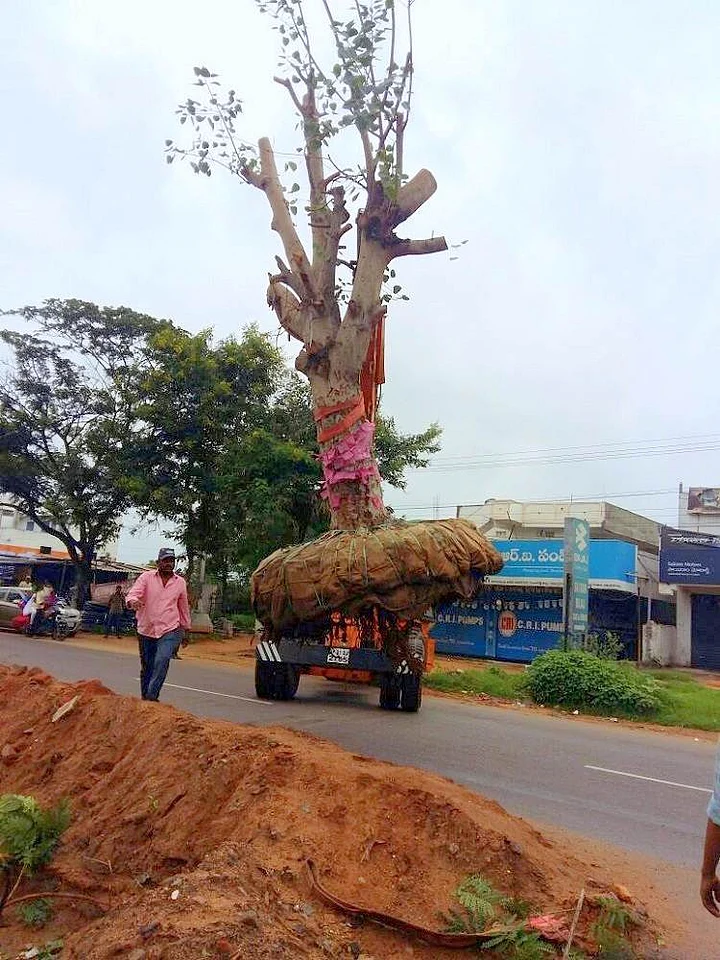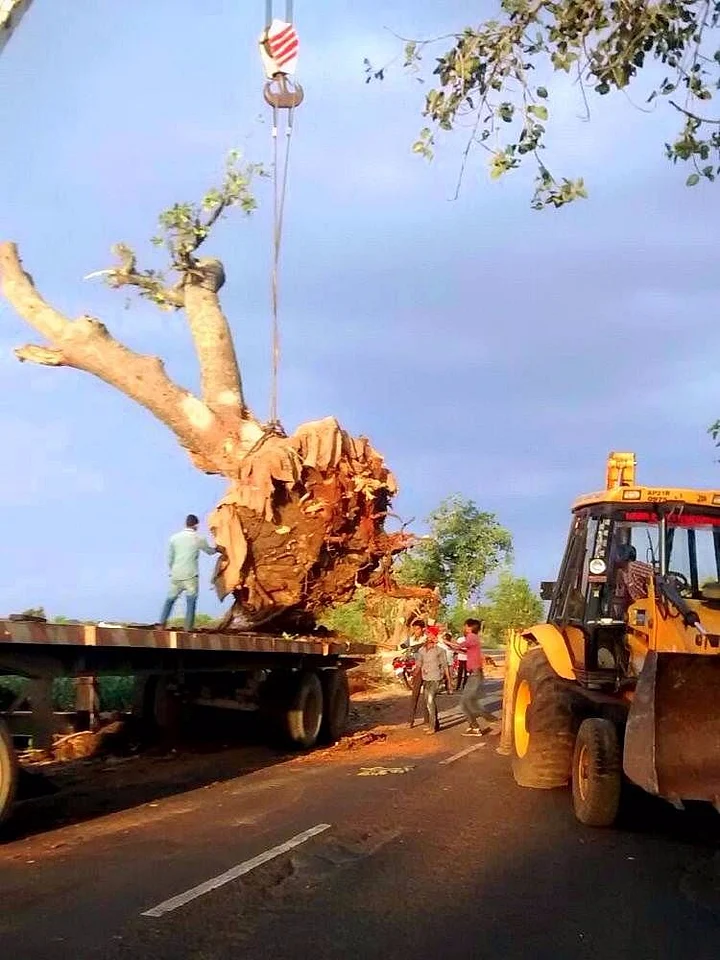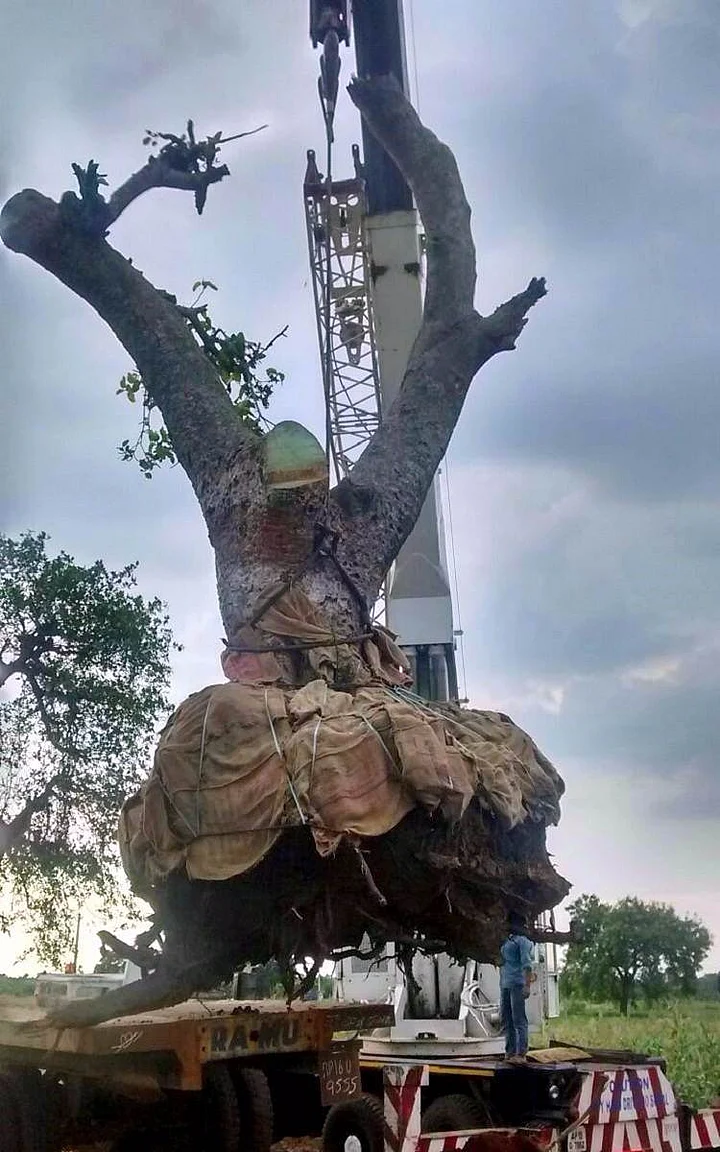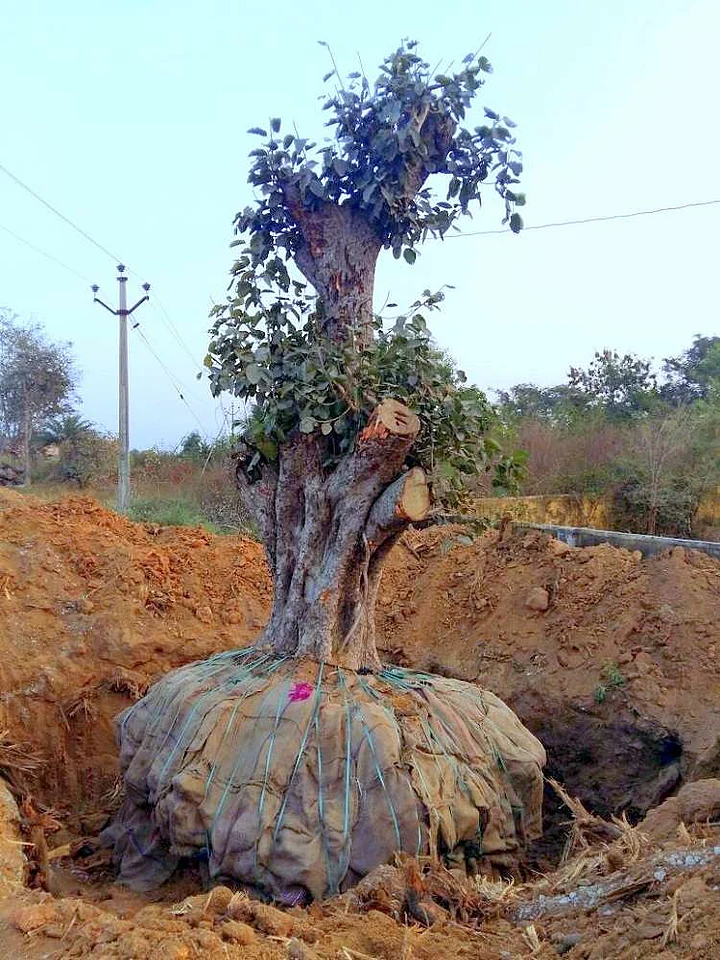In our rapidly growing cities, it’s the eternal dilemma – should we prioritise development or preserve trees? Can't development and a healthy environment go hand in hand?
Coming to the rescue is Hyderabad resident Ramachandra Appari. Every tree that is chopped down for a new flyover or an apartment complex has a chance to be saved, he insists.
And the 38-year-old has put his money where his mouth is, running the Green Morning Horticulture Services Private Limited, a company based in Hyderabad that specialises in tree translocation. Tree translocation is a process in which trees are uprooted whole instead of being cut down, and re-planted at a different location.
The Process
Tree translocation is not a new process by any means. The practice can reportedly be dated to as far back as 2000 BC in Egypt. But with growing environmental awareness in the past few years, the process has gained more acceptance, even among governments.
Trees that have to be relocated are first pruned, Ramachandra explains. Nearly 80% of the tree, leaves and branches included, is removed.
Then, a trench is dug around the tree, its depth based on the age of the tree. The roots are then treated with chemicals and packed in gunny bags, resembling a root ball. A crane then lifts the tree and loads it onto a trailer, which then ships it to its new destination.
At the new spot, the tree is then planted in a newly-dug pit treated with chemicals.
Survival
Ramachandra says that, so far, his company has translocated around 5,000 trees from 90 different species.
"The survival rate for all species is not the same though. Latex-yielding, soft-wood trees like banyan, peepal and gulmohar have a 90% survival rate. On the other hand, hard-wood trees like neem, tamarind, and teak have a survival rate of 60-70%," he says.
Cost
The company works with the governments, organisations and even individuals. "Individuals often ask for trees to be translocated to their farmhouses."
The cost of translocating trees depends on the size of the tree, the number of trees, and the distance it has to be translocated to. "If the number of trees is more, the charge decreases considerably. Charges start at around Rs 6,000, but we have also charged Rs 1.5 lakh for one order," Ramachandra says.
And Hyderabad is definitely not the limit for the company. Ramachandra says that they have translocated trees to as far as Delhi, and they also undertake orders in other parts of the country including Bengaluru, Vizag and the national capital.
The Beginning
In college, Ramachandra had pursued a Master’s degree in Agriculture and an MBA in Agri Business, but was placed in a private sector bank during a campus placement. While he went on to work with the company for the next four years, his heart pined for a different profession. "Eight years of Agriculture Studies and then getting into something different didn't feel right. I left that job for my passion," he says.
In 2009, Ramachandra was travelling from Hyderabad to Vijayawada when he saw a road widening project being carried out. Lots of trees were being mowed down, and it struck him that there must be an alternative solution to such indiscriminate chopping of trees.
He read up the literature on tree translocation, and learnt from a friend in Australia that the practice was common in the country. "We, however, have had to customise ourselves according to Indian conditions. There are certain restrictions that we face here. The soil is very hard here, and the machinery used abroad will not work on rocky terrain. We also have to take care of electric wires hanging everywhere."
As the construction for the Hyderabad Metro Rail project started, Ramachandra's company pitched in to translocate the trees falling on the proposed track. "Back then, we translocated 800 trees for the Metro and that helped create a buzz around the company," he states.
As word spread, some individuals even came forward to pay for the translocation of some trees that the Metro did not want to foot the bill for.
Though planting new trees is important, says Ramachandra, translocating is also a practical and viable practice as translocated trees regrow in just four or five years.
"If I am a 60-year-old and want trees in my farmhouse, instead of planting small trees, that will take decades to attain their full shape, I can just translocate the trees. For me, these are quick readymade trees."
(At The Quint, we question everything. Play an active role in shaping our journalism by becoming a member today.)








